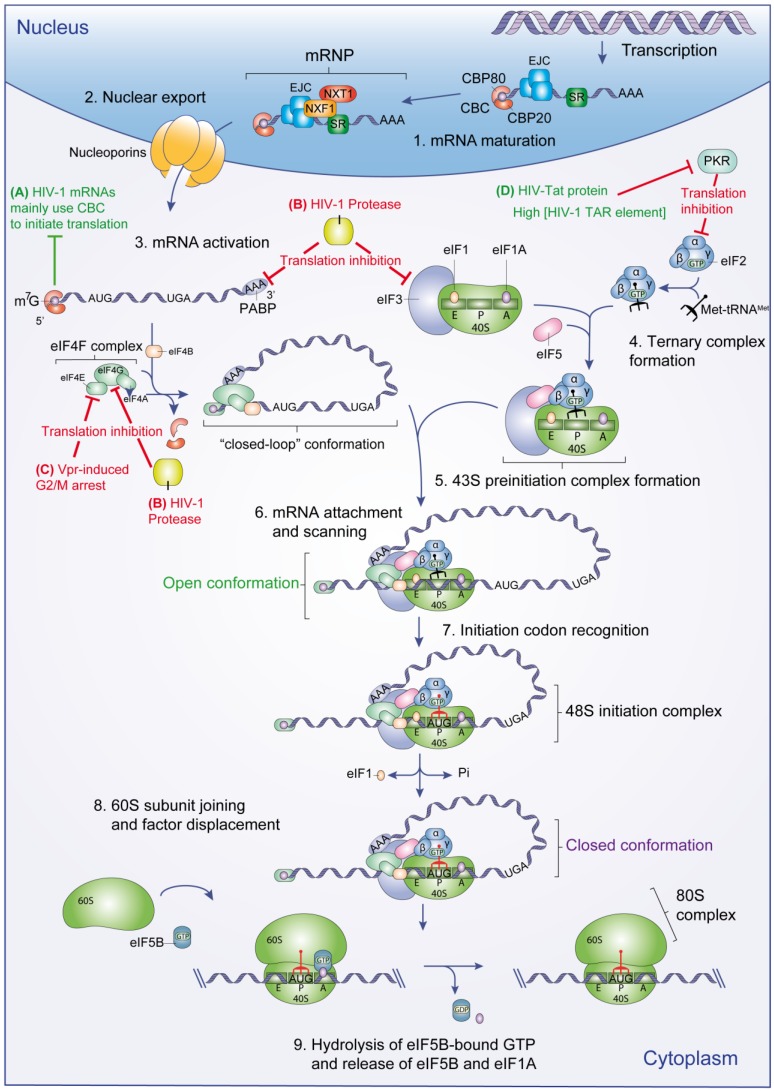Figure 1.
Eukaryotic translation initiation. mRNA maturation and nuclear export precede translation initiation (steps 1 and 2). Once in the cytoplasm, mRNA is activated (step 3) and 43S PIC formation takes place (step 4 to 5). The mRNA recruits the 43S PIC and scanning begins until an initiation codon is detected (step 6). At this point, the 48S initiation complex is formed and the 60S subunit is recruited to form the ribosome 80S complex (step 7 to 9). HIV-1 viral functions important to control the eukaryotic translation initiation are shown. (A) Unspliced and singly-spliced viral mRNAs could be translated due to the ability of the CBC to activate mRNA during translation initiation (green line); (B) HIV-1 protease partially inhibits translation initiation by targeting PABP, eIF3 and eIF4G (red lines); (C) Vpr-induced G2/M arrest indirectly inhibits host protein translation by targeting eIF4E activity (red line); (D) HIV-Tat protein and high concentration of HIV-1 TAR element indirectly promote viral translation by blocking PKR activity (red line). PKR phosphorylates eIF2α to block its recycling for ongoing translation, resulting in a potent translation inhibition of cellular and viral mRNA.

